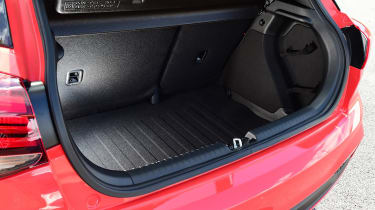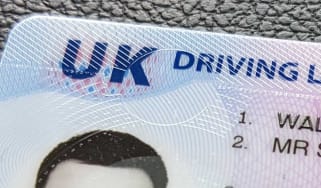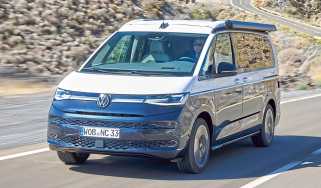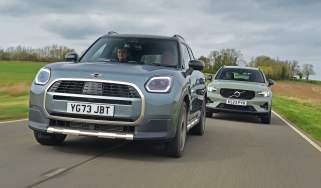Used Hyundai i20 (Mk2, 2015-2020) review - How practical is it?
A roomy cabin and a big boot make the Hyundai i20 Mk2 a handily practical supermini
Considering its size, the Hyundai i20 Mk2 is a pretty practical car. When compared with its contemporary rivals, the Hyundai offers good amounts of space for passengers and has a competitively-sized boot. Equipment levels are decent across the board on the i20 Mk2, too, although later models did come with more safety kit and a more modern infotainment system than earlier examples.
Dimensions and cabin design
By supermini standards, the Hyundai i20 Mk2 is quite a big car at 4,035mm long, 1,734mm wide and 1,474mm high; it’s a fair bit bigger than many of its contemporary rivals.
This translates into a lot of interior space for a car of this size. Front-seat headroom and knee room in particular are quite generous, and the car’s width means there’s a decent amount of shoulder room for adults in the rear row. However, as a result of the car’s sloping roofline, rear seat headroom isn’t as impressive, and lags behind what some rivals like the Volkswagen Polo can muster.
Likewise, stowage solutions in the Hyundai i20 Mk2 are on par with the supermini standards of the time. The glovebox is a decent size, and the front and rear doors each come with respectably spacious door bins. Some models also came with an additional storage cubby that can be found underneath the central armrest for the front seats.
Boot space
Complementing its good passenger-carrying credentials, the Hyundai i20 Mk2 also fares well when it comes to boot space. At 301 litres, the i20’s boot is very big for this class, and is noticeably larger than the load areas available in rivals such as the Vauxhall Corsa (285 litres) and Toyota Yaris (286 litres).
More reviews
Car group tests
- Vauxhall Corsa vs Hyundai i20: supermini titans go head-to-head
- Ford Fiesta ST vs Volkswagen Polo GTI vs Hyundai i20 N: 2022 group test review
- Volkswagen Polo vs SEAT Ibiza vs Hyundai i20: 2021 group test review
In-depth reviews
Road tests
- New Hyundai i20 facelift 2023 review: subtle updates for an already stylish supermini
- New Hyundai i20 N Line 2022 review
- New Hyundai i20 N 2021 review
Used car tests
You can also increase the load bay up to 1,042 litres in size by folding the 60:40 split-folding rear seats down. Most Hyundai i20 Mk2 models were also fitted with an adjustable boot floor, which can be used to reduce the boot’s load lip and create a flush floor once the rear seats are folded down at the expense of a few litres of cargo capacity.
Equipment and technology
Features-wise, the entry-level S trim level on the Hyundai i20 Mk2 isn’t too bad considering it’s the base spec. As standard, this version was fitted with electric front windows, heated wing mirrors and central locking. Do bear in mind that air-conditioning wasn’t fitted as standard on the S trim level until June 2018 – prior to that, you’d need to opt for the slightly plusher S Air spec to get air-con as standard.
If you’d prefer a few more creature comforts, then the SE trim level may be the ideal spec for you. This grade of Hyundai i20 Mk2 was equipped with alloy wheels, cruise control, rear parking sensors, Bluetooth connectivity.
At the top of the Hyundai i20 Mk2 pecking order were the Premium and Premium SE trim levels. The former had automatic lights and windscreen wipers, climate control and privacy glass, whereas the latter built on that further with features like a panoramic sunroof, all-round parking sensors and heating for the steering wheel and front seats. Both Premium grades were also available with Nav variants, which as their name suggests included a seven-inch touchscreen with a built-in sat-nav system.
For a majority of the Hyundai i20 Mk2’s production run, the equipment levels across the trim levels remained pretty consistent, with few noteworthy changes. The only shake-up that’s worth bearing in mind when shopping around for used i20 Mk2 examples occurred when the range was updated in June 2018: from this point on, all cars came as standard with a reversing camera, a DAB digital radio and a seven-inch touchscreen with built-in Apple CarPlay and Android Auto smartphone connectivity. If you’re considering a used Hyundai i20 Mk2, it’s these versions that we suggest you go for if they’re within budget.
Safety
The Hyundai i20 Mk2 has a good record when it comes to safety. It was awarded four-out-of-five stars by the Euro NCAP safety assessment body in 2015, and the car returned good ratings in the adult passenger (85%), child passenger (73%) and pedestrian protection (79%) categories. Results for the safety technology portion of the test weren’t as strong, as the i20 Mk2 scored 64% in this area.
As alluded to by its score, the Hyundai i20 Mk2 came with a decent selection of safety features as standard. All versions came out of the box with a complement of six airbags, stability control, a tyre pressure-monitoring system and Isofix child seat mounting points on the two outer rear seats. On higher-spec models, these features were expanded to include lane departure warning, and from 2018 onwards all but the most basic trim level came as standard with autonomous emergency braking, automatic headlights and a driver drowsiness monitoring system.



